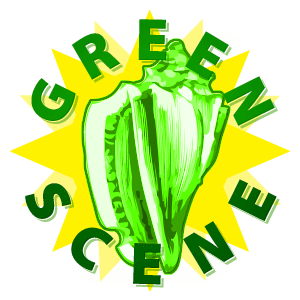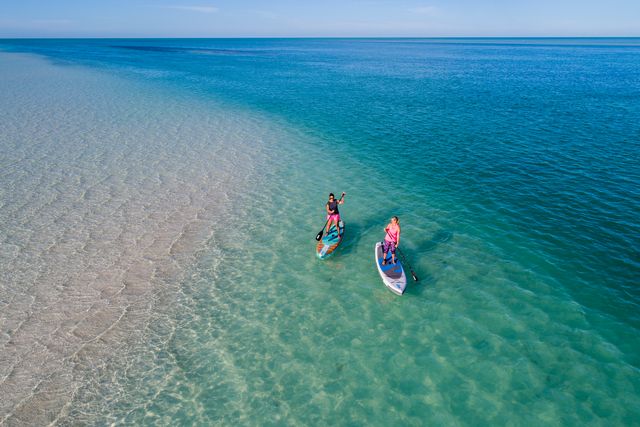Reconnect with the Natural World in the Florida Keys
FLORIDA KEYS — To reconnect with the natural world of the Florida Keys, visitors can immerse themselves in the island chain’s many open-air areas where seclusion is intrinsic. Wander along sandy beaches, discover nature trails through hammocks and rainforest areas, or explore the clear blue waters surrounding the Keys.
On land, visitors can discover natural gems during a Keys hike or bicycle ride.
Tropical woodlands called hammocks surround Marathon’s Crane Point Hammock Museum & Nature Center, named for Keys preservationists Frances and Mary Crane, both ardent horticulturists. From the late 1940s to the 1970s, the Cranes planted exotic flowering trees and shrubs. Red, white and black mangroves and marsh pools can also be found on the 63.5-acre site, one of the Florida Keys’ most sensitive environmental and archaeological attractions.
The property is home to the hardwood species lignumvitae, Jamaica dogwood and native thatch palms found nowhere else in the United States. Nature trails and a kayak launch for paddling along shallow, mangrove-lined areas of Florida Bay are soft adventure highlights for the entire family. Visit cranepoint.net.
At the gateway to Key West lies a quiet, secluded 15-acre conservation habitat and subtropical botanical garden just off College Road at mile marker 5. The Key West Tropical Forest & Botanical Garden features more than 6,000 rare and endangered plants and trees that provide habitat for 39 butterfly species and 202 native and migratory bird species. Explore 12 self-guided nature trails and boardwalks, two 1.5-acre butterfly habitats, two freshwater ponds, a Cuban palm exhibit and more. Visit keywest.garden.
Find a secluded oasis off Big Pine's Key Deer Boulevard, just 3 miles north of its intersection with the Florida Keys Overseas Highway. An abandoned quarry called the Blue Hole exposes the Keys’ unique freshwater source and attracts a wide variety of wildlife. Tiny Key deer drink there, as do other occupants including alligators, turtles, snakes, fish and a variety of birds. Enjoy the view from the observation platform or venture along the forested edges of the walking trail.
After encountering the wildlife on land, continue a Florida Keys nature adventure by seeking out the creatures of the sea. The warm, clear, calm waters typical of the Keys’ summer months enable easy exploration of the intriguing shoreline environment.
Few paddling experiences are more quietly enjoyable than isolated kayak or standup paddleboard trips through backcountry flats and along the clear, shallow fringes of mangrove forests. Board sales, rentals and guided tours are offered by nearly every watersports and outdoor outfitter throughout the Keys and are among the amenities offered at several Keys resorts.
Alternatively, cast off for a kayak fishing excursion. While kayaking around the spectacular mangrove islands of the Keys has become a favored adventure, intrepid anglers are now trying kayak fishing. It's a great way to sneak up on skittish bonefish on the flats or wary redfish and snook under the mangroves. Kayak rentals are available throughout the Keys, and it's also possible to book guided kayak fishing trips.
In 1963 Key Largo became the site of America’s first underwater preserve: the renowned John Pennekamp Coral Reef State Park. Visitors to the park can observe its abundant wildlife through recreational and educational experiences that include diving, snorkeling and kayaking. Visit floridastateparks.org/parks-and-trails/john-pennekamp-coral-reef-state-park.
In 1990 the U.S. government created the Florida Keys National Marine Sanctuary, protecting 2,900 square nautical miles of coastal and ocean waters including the prized coral reef that parallels the island chain. Not only does the sanctuary surround the entire land mass of the Florida Keys, it also includes vast stretches of Florida Bay, the Gulf of Mexico and the Atlantic Ocean.
This summer, connect with a professional Blue Star snorkeling or diving operator to explore vivid coral reef tracts teeming with tropical fish and exotic sea creatures, and to learn more about how coral reefs are being preserved and rejuvenated.
Spectacular shallow reefs are a short boat ride from the islands, located in water that’s often just 10 to 15 feet deep. Charter operators provide (and rent) equipment and simple instruction. Visit floridakeys.noaa.gov/onthewater/bluestar.html.
In fact, whether visitors prefer reef exploration, kayaking the shallow flats, hiking, viewing wildlife or other outdoor activities, the Florida Keys offer countless opportunities to renew connections with the natural world.






